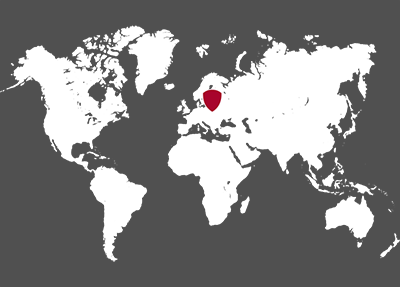We are all connected
 Ruud Langeveld,
Ruud Langeveld,
Van Leeuwen Pipe and Tube, Singapore
In 1979, Van Leeuwen Singapore started out with two people in an office. Now, 40 years later, it has grown into the largest Van Leeuwen distribution center in Asia. In this blog you will read more about why we settled in Asia, what the secret to our success is and which trends affect our role in the supply chain of tubes, fittings and flanges.
Singapore: the beginning
In May of this year we celebrated our 40th anniversary in Singapore. Between 1979 and today Singapore has developed into an important hub for shipbuilding, petrochemical and the pharmaceutical industry in South East Asia. These industries build their production facilities to serve the region, thereby attracting suppliers for construction and maintenance. The market potential was already clear to us back in the seventies. After all, manufacturing steel products was not China’s forte in those days. The majority of steel products came from Japan or Europe. And Van Leeuwen had already established a huge network of suppliers in Europe, which our local competitors were still lacking.
Strengthening partnerships
Our 40th anniversary’s theme was ‘partnership’. We are a trading company and our relationship with suppliers is a crucial element of the supply chain. In short, our success depends on it. For instance, when one of the largest oil firms places an order at Van Leeuwen and we in turn purchase materials from manufacturers approved by the customer, three links are already involved. We are all connected and we all have to prove our worth. That’s why it is so important to strengthen our relationships and to become part of the winning supply chains. When it comes to efficiency, the steel industry in our segment still has some room to grow.
Being part of a network
And by efficiencies I mean digitalization in particular. The steel industry is still fairly conservative in this regard. Granted, we live from moving physical products from A to B, but we are also obliged to digitize customer information and product specifications. This a good development and we are already setting up framework agreements for customers whom place automatic pipe and component orders. And this is just the beginning, also in Asia. We will have these kinds of arrangements more and more in the near future, which make us part of a network.
Sharing information
In order to increase the efficiency of our supply chains, it is necessary to share more information. For instance, if we know which pipes, fittings and flanges our customers used over the past year, we can make predictions for the future. We can then share this stock and consumption data with our suppliers so they can adapt their manufacturing schedule. When done on a very large scale, we can prevent a lot of wasted resources which in turn results in cost reduction for the end product, thereby benefiting the customer.
Digital connection
One of the biggest challenges, however, is the fact that we have to deal with two extremes in our supply chain. On one side, there’s the manufacturers which typically are the huge steel mills. They are focused on manufacturing pipes without waste. On the other side is the end user (the large energy companies), who has a huge capital intensive production line. Pipes are merely a byproduct to get production started. Our place in the supply chain is right between these two forces. And we now have a new role in creating a digital connection between the manufacturer and the end user. Information sharing does not change the physical supply chain directly. After all, the pipes still have to travel from the steel mill to the customer. However, what the information streams will do is help us to cut back on wasted resources. The reason behind this is that a steel mill has less overcapacity issues when it is better equipped to deal with market highs and lows.
Import licenses
We went to Singapore because we recognized an opportunity. And when an export market is sizable enough, opening a local office becomes an interesting possibility. This is how we ended up in Malaysia, Thailand, Indonesia and Australia in the eighties. An Australian contractor working on a project in Malaysia, for example, can now come to us for advise on importing pipes and supplying construction materials. We are in possession of all the needed licenses to import pipe materials. That is our added value.
Personal connection
It is important for Van Leeuwen to employ local people. Locals have specific knowledge and are more capable of building relations with local customers. Thanks to our international network, broad product knowledge and purchasing skills we have managed to gain a foothold in Asia. Through personal connections and respect for the different norms and values of our suppliers and customers, we have made our venture a success.

